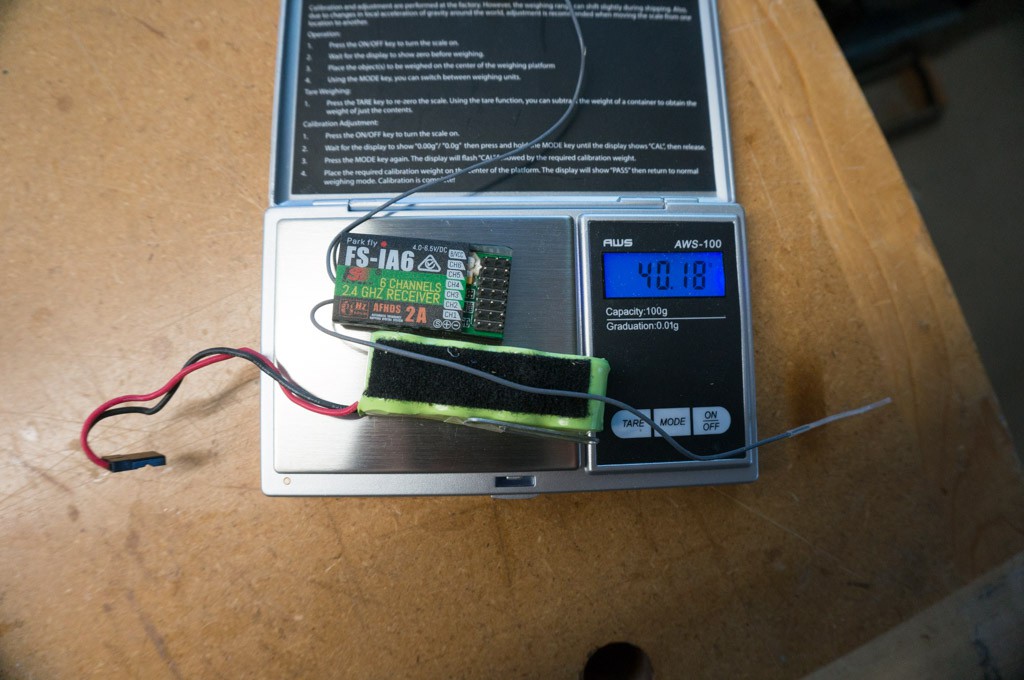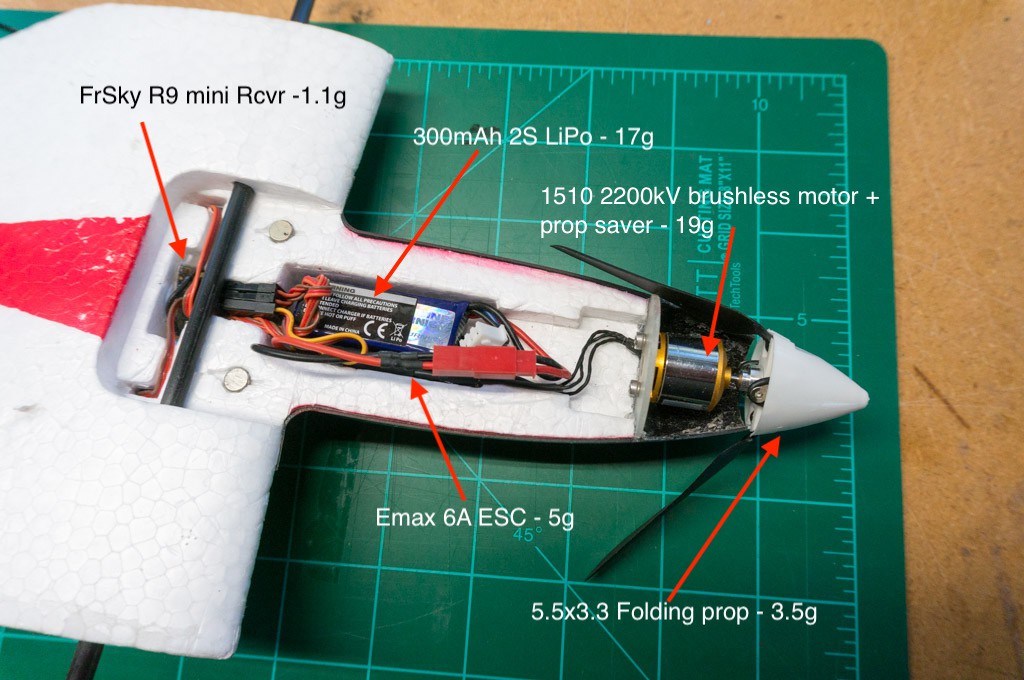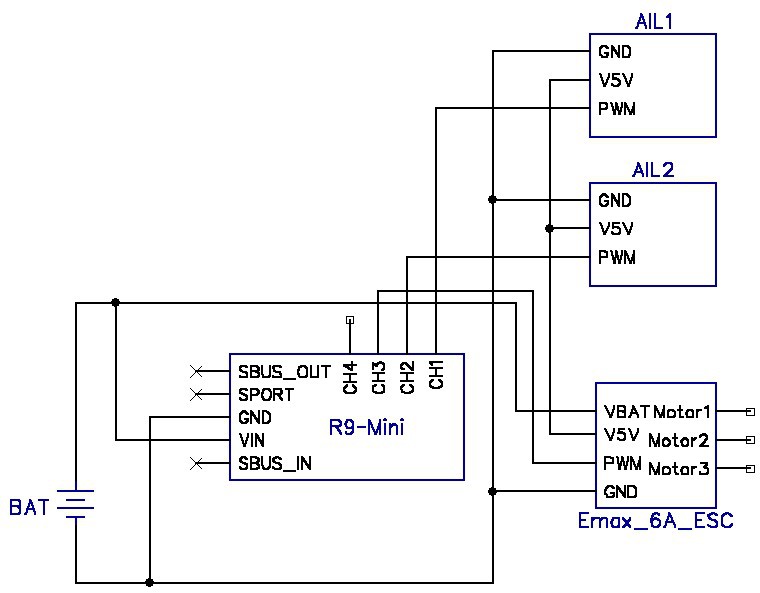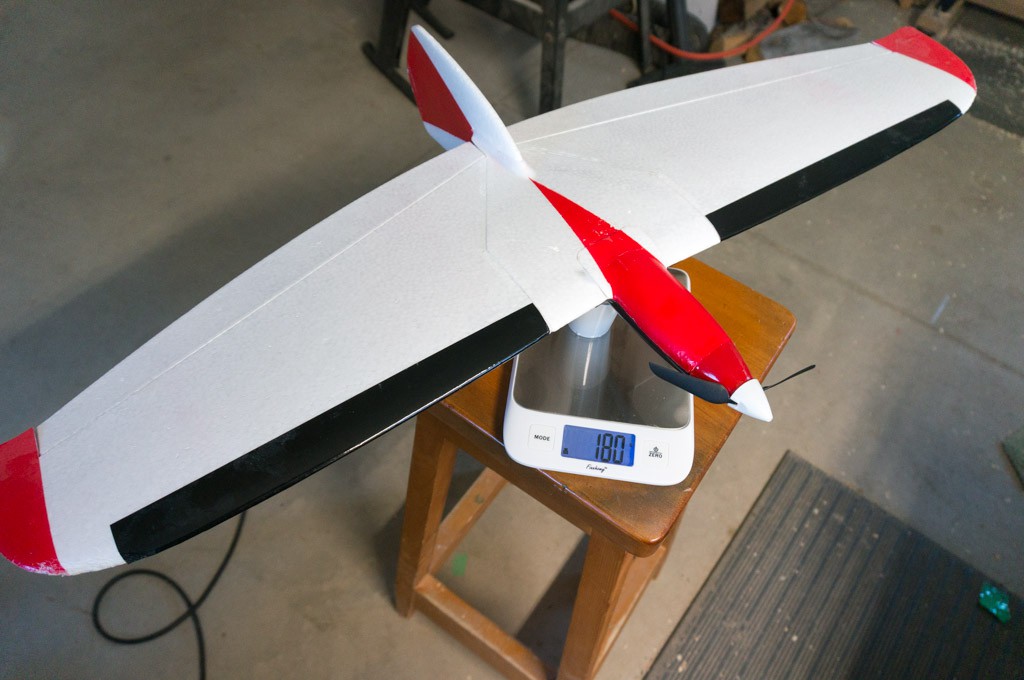I bought an Alula a few years ago. It was everything that Dream Flight said it would be, but my old damaged elbow joints did not tolerate the process of throwing the Alula repeatedly.
The Alula is a DLG (discus launched glider) from DreamFlight. I bought the Alula early on -- thinking that I could handle the stress of the launch on my old bones. It did not work out. After a couple of tosses my right arm was saying, "Don't do this again...it hurts a lot."
I found a website that provided information to convert the Alula to electric flight -- http://www.jivaro-models.org/alula_trek_electro/page_alula_trek_electro.html. Unfortunately, it's in French, but thanks to Google I could translate it into an understandable english version. I could not get ahold of most of the components called out by the French website. So I set about to find the necessary components available to US citizens. Still, I recommend that you review the French website -- it is a very good explanation of the conversion process.
The Alula Reference Starting Point:
The Alula ships with a heavy NiMH battery and suggests that you use a 7g receiver. The total AUW for these components is over 40g:

Finding Components:
HobbyKing doesn't have the motor called out by the French website. I waited a few months and then gave up and ordered an equivalent motor from Heads Up Hobbies (which is now going out of buisiness). The HobbyKing motor had a built-in prop-saver, so in order to provide an equivilant capability I added a prop-saver add-on for the motor that allowed for an equivilent solution. Here's what I eventually settled upon for my electrified conversion:I discovered that many of the recommended components are either out-of-stock or unavailable here in the USA. Hobby King was out-of-stock on the motor and ESC, so I went looking for alternatives.
I proceeded to substitute components for what I could get here. This is what I used:
- Turnigy NanoTech 300mAh 2S Lipo = 17g (the same as the French site)
- 1510 2200kV brushless motor + prop saver = 19g
- Emax 6A ESC = 5g (shortened wires)
- FrSky R9 mini receiver = 1.1g
- 5.5x3.3 folding prop = 3.5g (same as French site)
- Miscellaneous = 2g (motor mount, motor cover, etc.)
Total weight: 47.6g
The links provided are tenuous, so I will provide descriptions that will help you find an equivalent, if you wish to pursue this.
The motor:
- KV:2200
- Dimension:19mm x 23mm (excluding shaft)
- Weight:16.1g/0.57oz (not including connectors)
- Diameter of shaft:2mm
- Length of front shaft:8mm
- Resistance:0.52
- Max efficiency currency:2A to 6A,>70%
- Max working currency:8.5A
- IO:0.5A/10V
- Prop recommendation:
- 3S/10V, GWS 5030HD, 16500RPM, 5.5A, thrust 272g/9.6 oz.
- 2S/7V, GWS 7035HD, 10150RPM, 5.6A, thrust 215g/7.6 oz.
- ESC:10A
- Battery :2~3s LiPo or 6~10s NiMH
The ESC:
- EMAX BLHeli-6A
- Continuous Current - 6A
- Burst Current - 10A
- Battery - 1-2S LiPo
- Dimensions: 22x13x5.5mm
- Weight - 6g
- BEC - Linear, 5V/0.8A
The Battery:
Turnigy 2S (7.4V) LiPo, 300mAh/35C rating, 17g, JST connector with JST/HS balance connector. I believe there are better alternatives now. There is another Turnigy 2S 300mAh/70C LiPo that only weighs 18.2g -- a small weight increase for much better power capability. Also, with the popularity of the Whoop class of drone and the new Toothpick class, there are now 300-400mAh 2S LiPo batteries that might outshine the Turnigy stuff.
The Conversion:
I just followed the directions of the website that I referenced above. There are some areas where I deviated:
- The motor/prop saver are longer, so the motor mount must be set back further. Therefore, I increased the motor mount template by scaling the image on the printer (see files.)
- I used a small sheet of FR4 circuit board for the motor mount. I thought that this would be easier and stronger than creating one from fiberglass. FR4 is 1.6mm thick. I used the motor as a template for the holes.
- I used Goop adhesive to glue the motor mount to the cockpit, after cutting away the necessary foam. Be generous with the adhesive.
- The ESC and battery are so small that I did not have to cut away any extra foam to make room. The ESC just occupies part of the cavity and the battery fills the rest.
- There a few modifications to allow the propeller to fit nicely over the prop saver. There is a small nipple on the propeller block that must be removed, and then a hole drilled into the block to accommodate the propsaver. You can accomplish this with a sharp knife and an appropriately sized drill bit. Alternatively, the propeller unit can be attached directly to the motor shaft, but this approach might lead to a bent motor shaft after a hard landing.

The receiver is so small that it can occupy the space usually intended for ballast. I had to make a small header to connect the receiver to the two servos and the ESC. The header sits under the spar. Here's the schematic:

An R9-MM can be substituted for the R9-mini. Note that the battery connects directly to the ESC and the receiver. This is so I can get the correct battery voltage sent back to my Taranis transmitter via telemetry. The R9-mini can handle up to 10V on VIN. It works perfectly.
The all-up-weight is 180g and it is perfecty balanced on the two balance points on the Alula.

Performance:
This will not win any medals for speed under throttle. I live at 8000 feet (2440m) above sea level. Performance will be better at lower altitudes. But the Alula climbs nicely with >3/4 throttle, and it maintains altitude with about half throttle. I get 6-7 minutes of powered flight, and a bit more than that if there is any lift to be had. I'm pretty happy with it now and my right elbow is thanking me every time we fly it.
 Bud Bennett
Bud Bennett